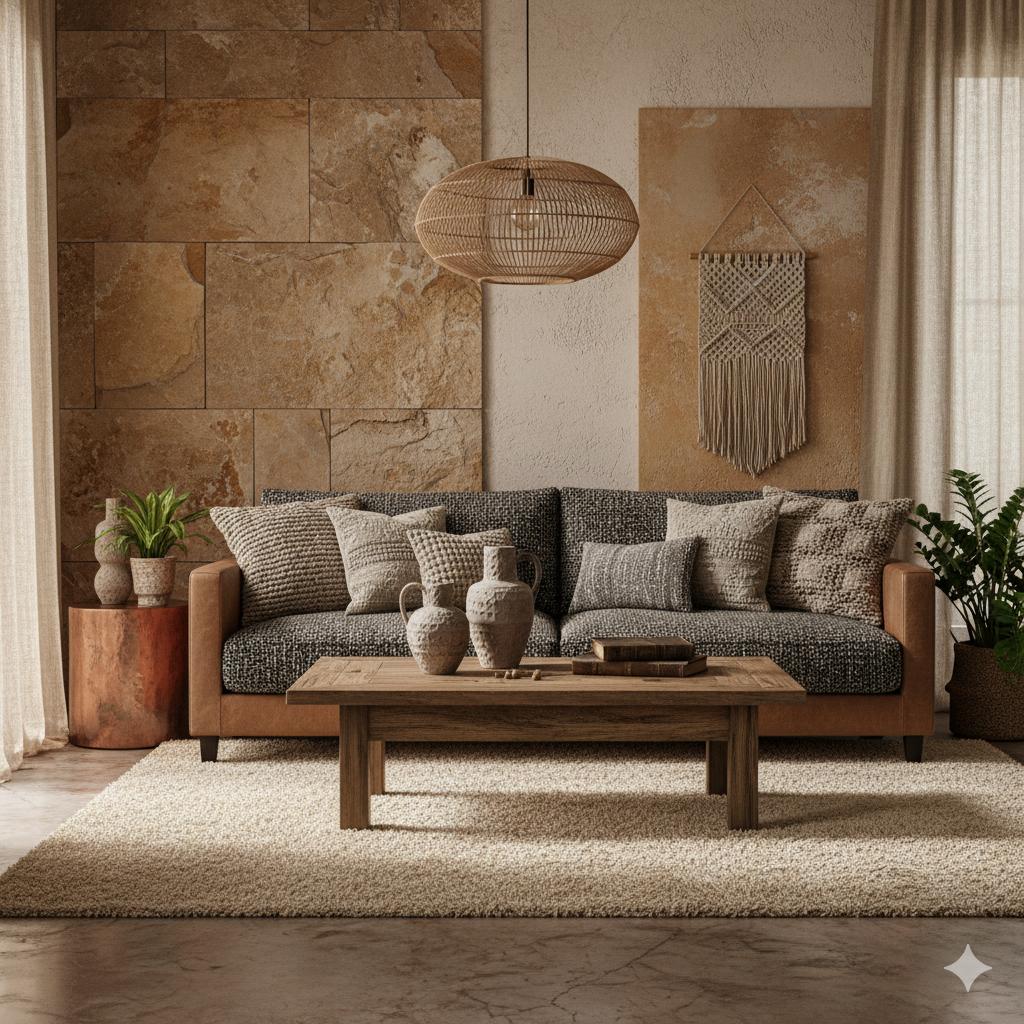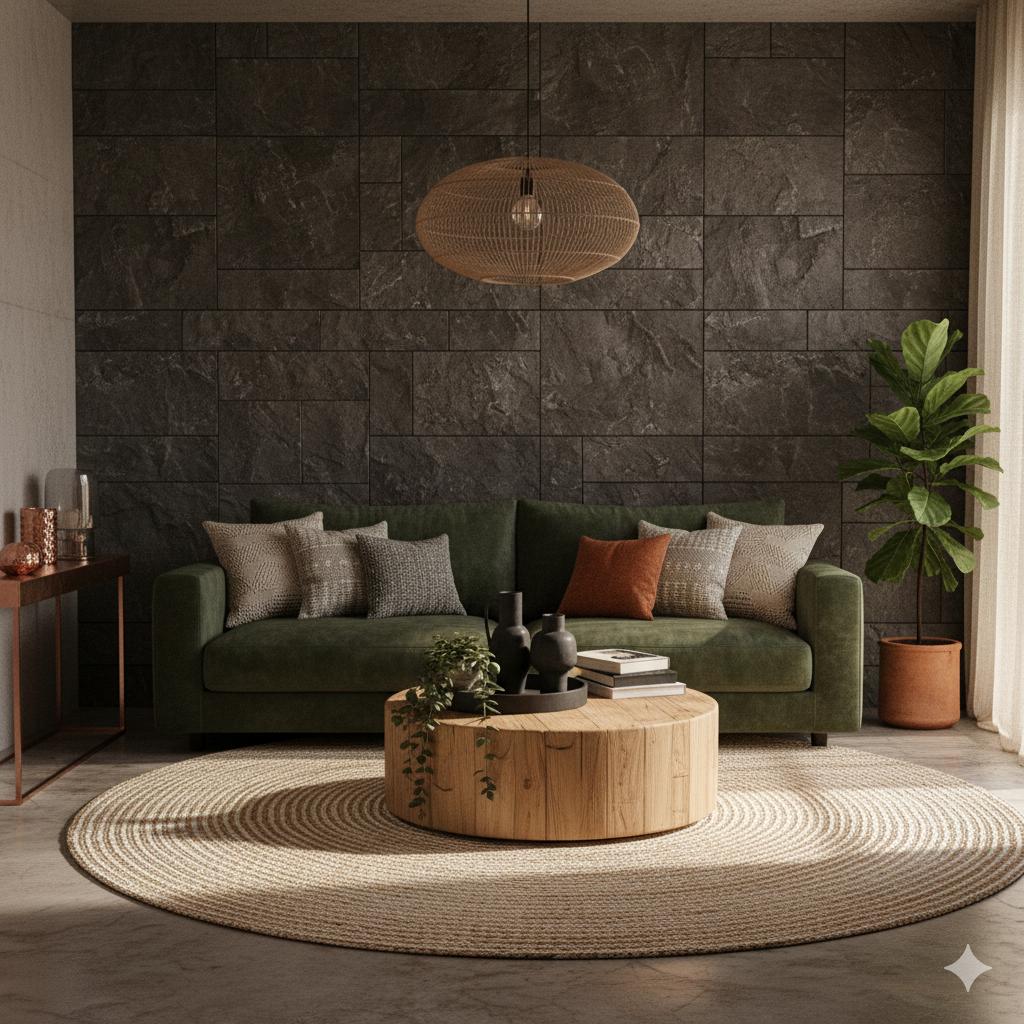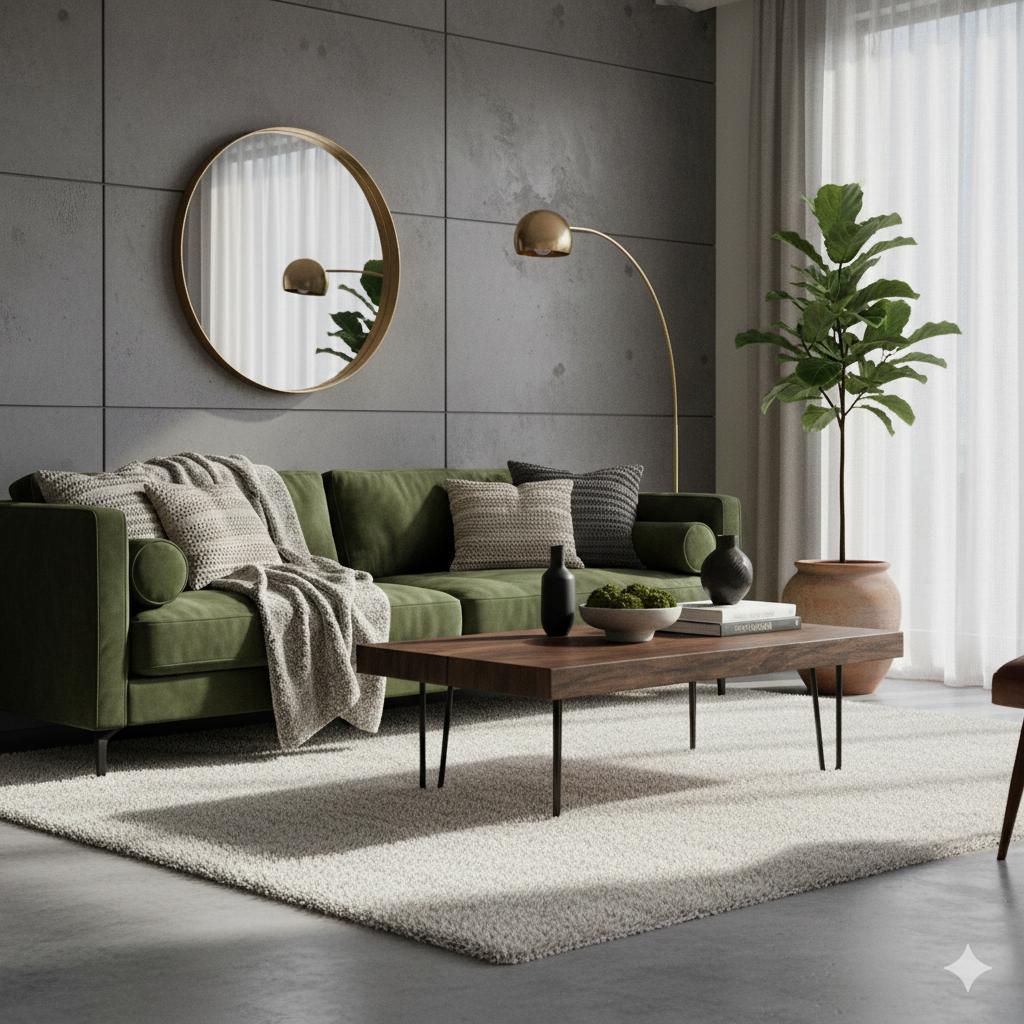1O Ways to Add Texture to Your Interior

If your interior design looks a little flat after a makeover, a lack of texture could be to blame.
Fortunately, it is an easy problem to fix, as a few thoughtfully placed decorative accessories, a little contrast, and a touch of nature and softness could transform a room and wow guests.
Improve your home’s visual interest and create a cosy, inviting space by reading the following 10 ways to add texture to your interior.
1. Transform a Flat Wall with Panelling
If you want to avoid statement wallpaper but are eager to create texture in a room, consider installing panelling.
Various options are available to elevate a flat wall and create a stunning focal point, such as:
- Wainscoting
- Shiplap
- Tongue and groove
- Beadboard
2. Add Softness with a Chunky Knit Throw Blanket
A chunky knit throw is a fantastic way to soften a space, as it can add balance to a room, especially if it features predominantly one material, such as wood.
It will create contrast and visual interest while inviting touch. A boucle or knitted design will pair wonderfully with a smooth upholstery, creating a more layered look. You might be surprised by the difference it makes to a room.
3. Mix and Match Your Cushions/Pillows

Enhance your bedroom or living room by mixing and matching your pillows or cushions.
Many professional interior designers will combine cushions or pillows of varying sizes, materials, and designs for a luxurious, textured feel.
For example, you could mix an elegant velvet cushion with crisp linen, tasselled, boucle, or leather designs. Also, play with different shapes and sizes to create more contrast and texture.
4. Create a Natural Aesthetic Using Raw Materials
Bring the outside in to create a more natural feel in the home and play with various textures.
For instance, introduce a wood-an grain coffee table in your living room, install a natural stone or concrete worktop in the kitchen, or pick chairs with a woven rattan back for a dining room.
5. Soften Your Walls with Textured Window Treatments
Textured window treatments will boost your privacy and comfort while improving vertical texture.
Woven bamboo, heavy linen, or a luxe velvet will add visual weight to an interior design while warming up your living room, bedroom, or dining room.
6. Inject Contrast with Metallic Accents

Metallic accents can create an attractive contrast when paired with a rough material or soft fabric.
It is a great way to balance a mix of materials in a room, making it feel more stylish and inviting.
For instance, you could add a brushed brass bowl, a hammered copper photo frame, a chrome sculpture, or a sleek metal floor lamp to your interior design.
7. Group Woven Storage Baskets for an Earthy Aesthetic
Woven storage baskets cannot only improve a room’s function, but they can also enhance an interior design by creating more texture.
For instance, group dark wicker, natural grasses, or seagrass options to create a natural, organic texture in a space. Plus, it’s a great place to store loose items, blankets, or magazines in the home.
8. Style Objects with Contrasting Textures
Styling homeware can feel like a tall task if you’re not a professional interior designer. However, to decorate your home like a pro, consider placing contrasting objects side by side on a shelf, mantle, or windowsill.
For instance, placing a ceramic lamp next to a glass vase and a clay sculpture will add texture while highlighting the beauty of each item.
Don’t forget to style items of varying heights in a wave to draw the eye for the right reasons.
9. Give Your Walls Some Texture

If you want your property to have more texture without incorporating many patterns and decorative objects, give your walls some texture.
For instance, Venetian plaster or limewash will create an aged, soft interior, which is more visually appealing than a flat paint finish.
If you have the budget, consider installing beautiful natural stone tiles, brick, cladding stone, or travertine.
10. Create Ceiling Interest
Most homeowners don’t consider their ceilings when making changes to one or more rooms in the home.
However, transforming the “fifth wall” could create a more visually beautiful, textured space that many guests won’t forget.
For instance, you could install tongue-and-groove panelling to create a cabin-style aesthetic, exposed beams to create a sense of history, or coffered ceilings for a high-end interior design.





















